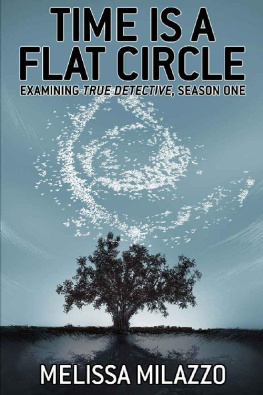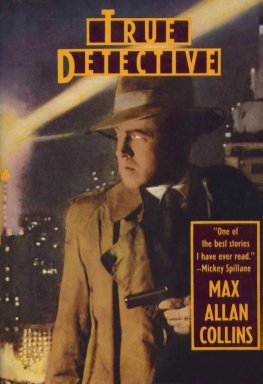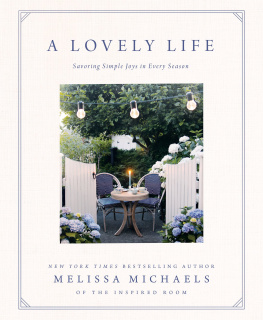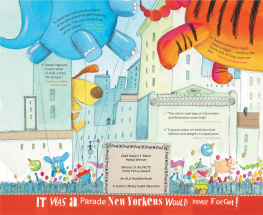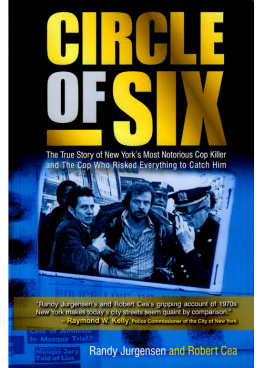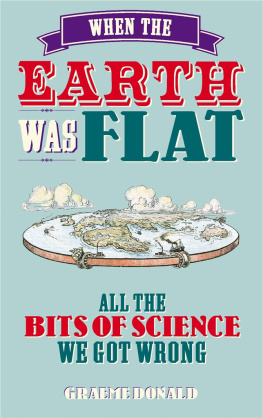Melissa Milazzo - Time is a Flat Circle: Examining True Detective, Season One
Here you can read online Melissa Milazzo - Time is a Flat Circle: Examining True Detective, Season One full text of the book (entire story) in english for free. Download pdf and epub, get meaning, cover and reviews about this ebook. year: 2019, publisher: Sequart Organization, genre: Detective and thriller. Description of the work, (preface) as well as reviews are available. Best literature library LitArk.com created for fans of good reading and offers a wide selection of genres:
Romance novel
Science fiction
Adventure
Detective
Science
History
Home and family
Prose
Art
Politics
Computer
Non-fiction
Religion
Business
Children
Humor
Choose a favorite category and find really read worthwhile books. Enjoy immersion in the world of imagination, feel the emotions of the characters or learn something new for yourself, make an fascinating discovery.
- Book:Time is a Flat Circle: Examining True Detective, Season One
- Author:
- Publisher:Sequart Organization
- Genre:
- Year:2019
- Rating:3 / 5
- Favourites:Add to favourites
- Your mark:
- 60
- 1
- 2
- 3
- 4
- 5
Time is a Flat Circle: Examining True Detective, Season One: summary, description and annotation
We offer to read an annotation, description, summary or preface (depends on what the author of the book "Time is a Flat Circle: Examining True Detective, Season One" wrote himself). If you haven't found the necessary information about the book — write in the comments, we will try to find it.
Time is a Flat Circle: Examining True Detective, Season One — read online for free the complete book (whole text) full work
Below is the text of the book, divided by pages. System saving the place of the last page read, allows you to conveniently read the book "Time is a Flat Circle: Examining True Detective, Season One" online for free, without having to search again every time where you left off. Put a bookmark, and you can go to the page where you finished reading at any time.
Font size:
Interval:
Bookmark:
Examining True Detective , Season One
Melissa Milazzo
with Adam and Mark Stewart

Sequart Organization (Edwardsville, Illinois)
Copyright 2019 by the respective authors. Characters and works mentioned herein are trademarked by various owners.
Kindle edition, Jan 2019.
All rights reserved. Except for brief excerpts used for review or scholarly purposes, no part of this book may be reproduced in any manner whatsoever, including electronic, without express consent of the publisher.
Cover by Kevin Colden. Book design by Julian Darius. Interior art is HBO.
Published by Sequart Organization. Edited by Mike Phillips. Assistant edited by Tim Bavlnka, Parker Bray, Keith Howell, and Karra Shimabukuro.
For information about other titles in this series, visit sequart.org/books .
Dedication
For Tone Milazzo, the Michael Jordan of being a husband.
Contents
Essays: Thats the Genre, Not the Title
Appendices: Fulfillment and Closure, Empty Jars to Store this Abstract Shitstorm
The first season of True Detective is the same old story. Its a buddy cop show with a pair of mismatched detectives who play by their own rules. Its hard-boiled sleuths in dive bars and shootouts, trading dialogue sharper than a knife to the back. Its a black-as-night noir with corruption and existential dread lurking around every corner. Its a Southern gothic draped in rotting vines and unspeakable family secrets. Its cosmic horror where the thin veil of reality is slipping and visions of an uncaring universe drive men to madness. True Detective is an amalgamation of pulp genres that have been done to death, and yet, there is a strangeness lurking in all the familiarity.
True Detective Nic Pizzolattos writing, along with director Cary Joji Fukunagas vision, T Bone Burnetts musical contributions, and the brilliant performances by leads Matthew McConaughey and Woody Harrelson proved a winning combination. As each new episode aired, it spawned hundreds of articles, blogs, and podcasts, each vying to untangle the shows non-linear narrative and dense web of literary and philosophical allusions. The lush, haunting visuals of the show inspired a blossom of fan art, while the eminently quotable dialogue was transformed into memes and parody.
Some critics hailed the show as revolutionary, dubbing the single writer/ single director format as auteur storytelling brought to the small screen. From its conception, the story was intended to run for a single season and have a concrete beginning and end. Additionally, Pizzolatto and Fukunaga retained tight control over creative decisions, achieving a clarity of vision not often possible when each episode of a show is the result of a different writer and director. As critic Andrew Romano notes, not every story is best told by committee or as an open-ended epic. Part of the appeal of True Detective is that each scene is branded with the shows distinctive look, feel, and sound, achieving a singular mood to match the journey of its memorable characters.
Although critical response to the first season was largely positive, there were notable dissenting opinions. The New Yorker s Emily Nussbaum found the show to be pretentious pulp, citing the flat female characters and disposable female bodies.
What was lost in all the controversy, hype, and fan theories about True Detective was a more in-depth look at what the show achieves as a genre work. At its core, True Detective is a cross-genre narrative, blending elements of hardboiled detective, noir, Southern gothic, and cosmic horror. Cross-genre work is not new, nor is it new to television, but in the first season of True Detective Nic Pizzolattos cross-genre storytelling reinvigorates a familiar story about cops chasing a killer, turning it into an opportunity to examine the nature of self, society, faith, and even reality.
This volume examines the first season of True Detective through the lens of genre to identify how Pizzolatto and Fukunagas use of multiple genres defines and amplifies a set of themes within the narrative. The focus here is less on the distinctions between genres and more on the places where they overlap. These points of intersection form the thematic pillars of True Detective : corruption of the self, corruption of society, the malleable nature of reality, and the meaning (or lack thereof) of life.
In the following essays, I apply close textual analysis to all eight episodes of the first season. This approach includes literary aspects of the show such as plot, dialogue, character, and symbolism, as well as directorial elements like editing and cinematography. In the spirit of staying close to the text, I use lines of dialogue as pull quotes throughout the essays. That, and because the dialogue is just too fun to be used without a little humor.
Each of the following chapters focus on single genre and how elements of the genre forward the key themes of True Detective . Both the first and the last chapters take a more foundational approach, looking at elements that inform the genres at work in True Detective . The first chapter looks to the roots of genre, building on the idea of the Cretan labyrinth myth as the precursor of detective fiction and interpreting True Detective as a retelling of that ancient tale about a man, a monster, and a labyrinth. The final chapter focuses on the anti-natalist philosophy that defines much of Cohles character, as well as the moral underpinnings of the comic horror genre.
The appendices in this volume provide a home for materials that highlight the wide array of media that influenced True Detective . Primary among these is a contribution by Adam Stewart and Mark Stewart. Their Guide to True Detective and Weird Comic Book Fiction, explores the many comic book tributaries that flow into True Detective . Adam and Marks work is a great introduction to how comic books can inspire television and film outside the superhero genre.
Music plays an integral part in setting the mood of True Detective , so any discussion of the show would feel incomplete without it. In the Groove focuses on the musical direction provided by the legendary T Bone Burnett. This appendix details every song appearing in show, along with notes about the songs history and significance to the scene in which it appeared. This Kind of Thing Doesnt Happen in a Vacuum covers the Louisiana true crime case that inspired the allegations against the Tuttle ministries in True Detective . Just the Facts, Maam chronicles the controversy sparked by weird fiction fans, a blog, and accusations of plagiarism. The final appendix is a recommended reading and viewing list. Compiled with the help of Miguel Rodriguez, founder of the Horrible Imaginings film festival and podcast, this list should help fans of True Detective find new stories to scratch that same itch.
Now that the vision has been articulated, its time to cue the music, pour a drink, and mainline the secret truths of the True Detective universe.
ESSAYS:
Thats the Genre, Not the Title
In the first episode of True Detective , Marty Hart lists the types of detective hes seen over the course of his career. The bully, the charmer the brain. Any of those types could be a good detective and any of those types could be an incompetent shitheel. As Hart notes, a detective isnt defined by his personality; he is defined by his work as an investigator. Although many types of detective appear in the various genres of detective fiction, their investigations tend to follow a pattern. Should the story feature a classical detective like Sherlock Holmes or a hard-boiled shamus like Sam Spade, the initial investigation quickly expands into a much larger mystery, a case that leads the detective through a winding maze of possibilities and dead-ends. This shared pattern exists because all varieties of the detective genre, including True Detective , have a shared ancestor in the myth of the labyrinth.
Font size:
Interval:
Bookmark:
Similar books «Time is a Flat Circle: Examining True Detective, Season One»
Look at similar books to Time is a Flat Circle: Examining True Detective, Season One. We have selected literature similar in name and meaning in the hope of providing readers with more options to find new, interesting, not yet read works.
Discussion, reviews of the book Time is a Flat Circle: Examining True Detective, Season One and just readers' own opinions. Leave your comments, write what you think about the work, its meaning or the main characters. Specify what exactly you liked and what you didn't like, and why you think so.

